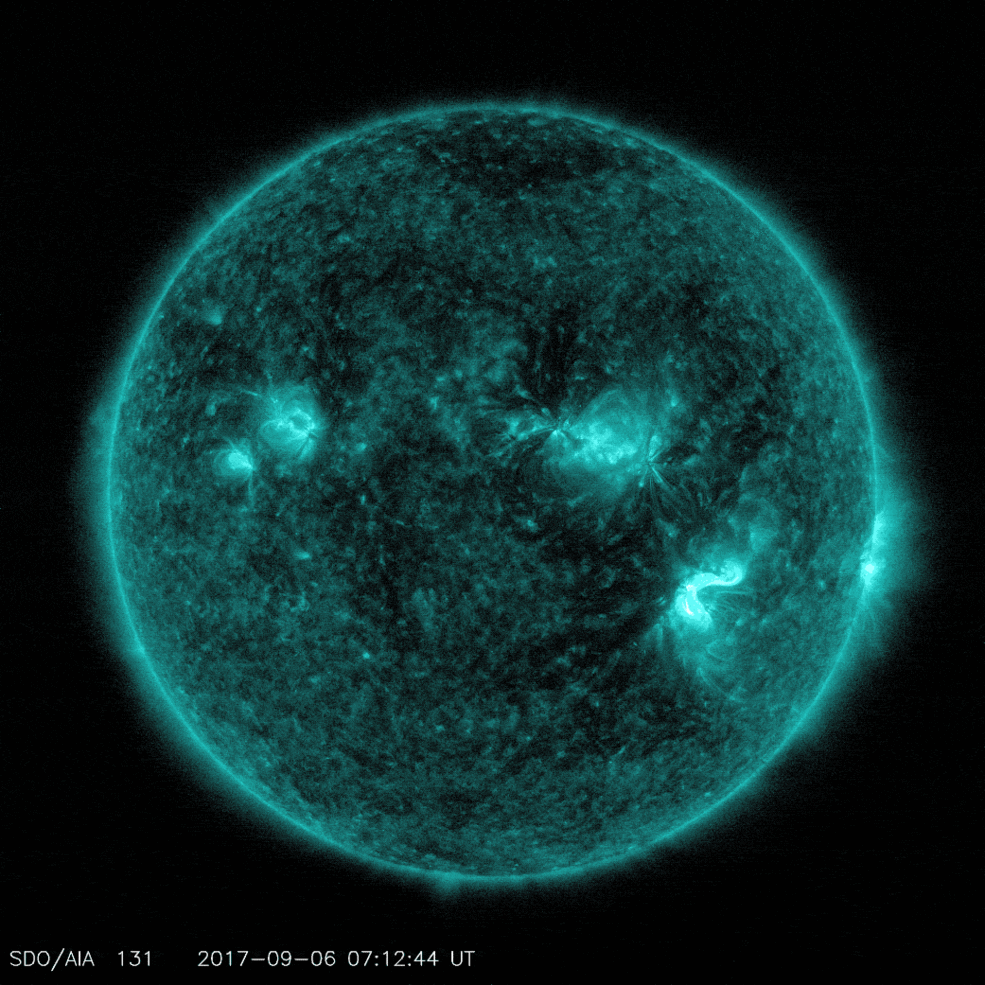NASA Captures Strongest Solar Flare in a Decade
This morning, the sun emitted two X-class flares, disrupting GPS and radio signals
/https://tf-cmsv2-smithsonianmag-media.s3.amazonaws.com/filer/55/e7/55e74e79-2688-4d88-89de-8dc1d8bc4afd/flares.jpg)
If your GPS unit or ham radio seemed a little wonky this morning, there’s a good reason. According to NASA, the sun let loose two massive flares. Both belches were categorized as X-class emissions, the most intense category of flares, and the second was rated X9.3, making it the most powerful solar flare in a decade.
The first flare peaked at 5:10 A.M. eastern time and the second at 8:02 A.M. Both flares were detected by NASA’s Solar Dynamics Observatory, which captured images of each event.
"X-class solar flares are the largest explosions in the solar system," writes Leah Crane at New Scientist. The flares occur when the spinning of the suns interior contorts its magnetic field. When the magnetic field explosively realigns, it sends out a sudden flash of light. The same process can also hurl a coronal mass ejection, a stream of plasma and magnetic radiation, into space.
There's no need to fear these bursts, according to NASA. Radiation from the solar flare cannot pass through Earth's atmosphere so it will have no negative impacts for people on the ground. The streams can, however, impact communications systems, particularly older satellites. But the latest generation of satellites, including the GOES-16 satellite used to track Harvey, are hardier against the flares, Terry Onsager, a physicist at the NOAA Space Weather Prediction Center, tells Stephanie Pappas at LiveScience.
These large flares are a little unusual for our sun. It is currently at a so-called solar minimum, the period of lowest activity during its 11-year sun spot cycle. In fact, solar activity has diminished so much in recent decades that some researchers believe we are soon heading into a “Little Ice Age” event similar to the event that led to globally-cooler temperatures during the late 1700s and early 1800s. Even so, this doesn't mean the sun is completely quiet.

“We are heading toward solar minimum, but the interesting thing about that is you can still have events, they’re just not as frequent,” Rob Steenburgh of NOAA’s Space Weather Prediction Center (SWPC) tells Lewin. “We’re not having X-flares every day for a week, for instance — the activity is less frequent, but no less potentially strong.”
While these flares were impressive, they are far from the largest, which was an X28 that exploded on the scene in 2003. It may have been even stronger, reports Crane. At the time, NASA instrumentation became overloaded and stopped recording the event.
There could be a positive side of all these bursts: auroras. Many of the large flares are associated with CMEs. The particulate from that stream of energy often collides with Earth's magnetosphere then streams toward the poles where it sparks bright colors in the sky.
As Sarah Lewin at Space.com reports, the latests flares came from a sunspot called "active region 2673," which is seven times as tall as Earth and nine times as wide. Yesterday, the same spot blew out an M-class solar flare, which clocks in at about one-tenth the power of an X-class flare. That blast created two coronal mass ejections, which will lead to awesome auroras tonight.
Astronomers are not sure if these latest X-class flares also produced coronal mass ejections since the orbiting observatories used to watch the sun are out of contact with Earth until later tonight. If they did produce CMEs, that means we’re in for astounding auroras in the coming days.